Hi Jac after the intro @ Conf was there any follow up for you/did u see a unit for poss MP fwdr porting?
No followup but I got my kickstarter units about two week ago.
Good evening, the Pycom Pygate that I reported on has been completely stable and seems to perform very well.
My next step for my own interest, which I will report on the forum, is to run it purely on battery and to see how long it runs. I want to see if it could work as a temporary pop-up on a small battery.
Thanks, Tim. That gives me more confidence! Given the price point, I’m just surprised there aren’t more being reported here.
I was interested in it for just such an use case as possible alternate to TTIG or Dragino LPS8… as well as as a small form factor design to put in a dinrail case for industrial monitoring/processes…had printed some cases ready but Pycom never delivered  ah well guess it was impact of slow down then lock down soon after the Conf… with Kickstarter/paying customers a likely priority since…
ah well guess it was impact of slow down then lock down soon after the Conf… with Kickstarter/paying customers a likely priority since…
I got mine last week but after 30+ years of tech, I’m jaded & cynical so things only get unboxed on a vaguely organised schedule.
In this case, as the price point opens up some commercial possibilities, I’ll be taking it for a spin next week and provide some feedback.
Given that they just became available after a years wait for the kickstarter backers I’m not surprised. Mine literally arrived weeks ago and I’m currently busy with other things so I haven’t even unwrapped the package yet.
Have used a public design for the cases? I might need something when I find the time to take a look at them. (Should have two and one PoE shield IIRC)
Was planning to use modifed RPi DIN cases - ended up using them when I got bored in lock down…for RPi’s!  Will check if have some left in spares…did a bunch…and will send you 1 or 2 if I can find them
Will check if have some left in spares…did a bunch…and will send you 1 or 2 if I can find them 
Found designs on Thingiverse and another place - will check…
One example - IIRC the Pygate mounting holes were just a bit smaller spacing than the RPi mountigs so easily adapted, given smaller size relative to RPi. Was looking to cut a couple of small slots in longer edge of housing for pwr, external SMA Ant, etc.
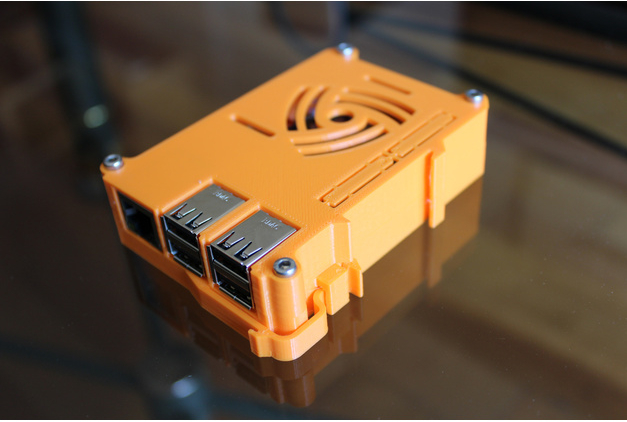
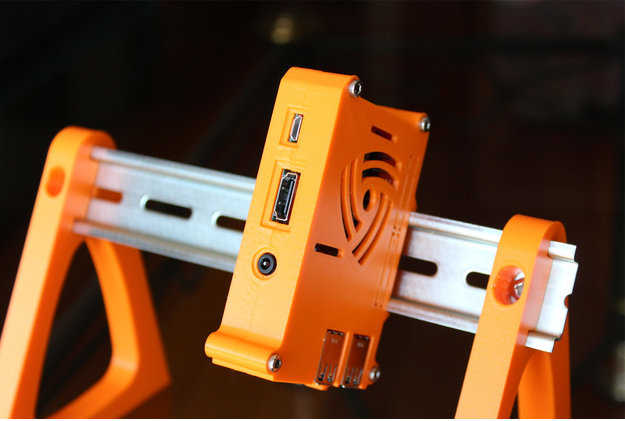
Was waiting to check when in hand as suspected there was just enough space at end of case to add a small DC-DC to adapt a standard DIN PSU feed…
Nice-looking DIN case.
I’m looking for a high RPi 3 case that will take the RPi and my LoRaGo Port gateway. Since the LoRaGo gets kinda hot, I want to add a small fan inside or out.
Pycom says their IP67 case will hold the Pygate and WiPy.
Hi @Saelkind, this photo is the pygate alongside a standard Pycom IP67 enclosure. The pygate and small PCB antenna will fit well inside the enclosure but adding a battery like the 3000mAh LiPo shown would not be possible.
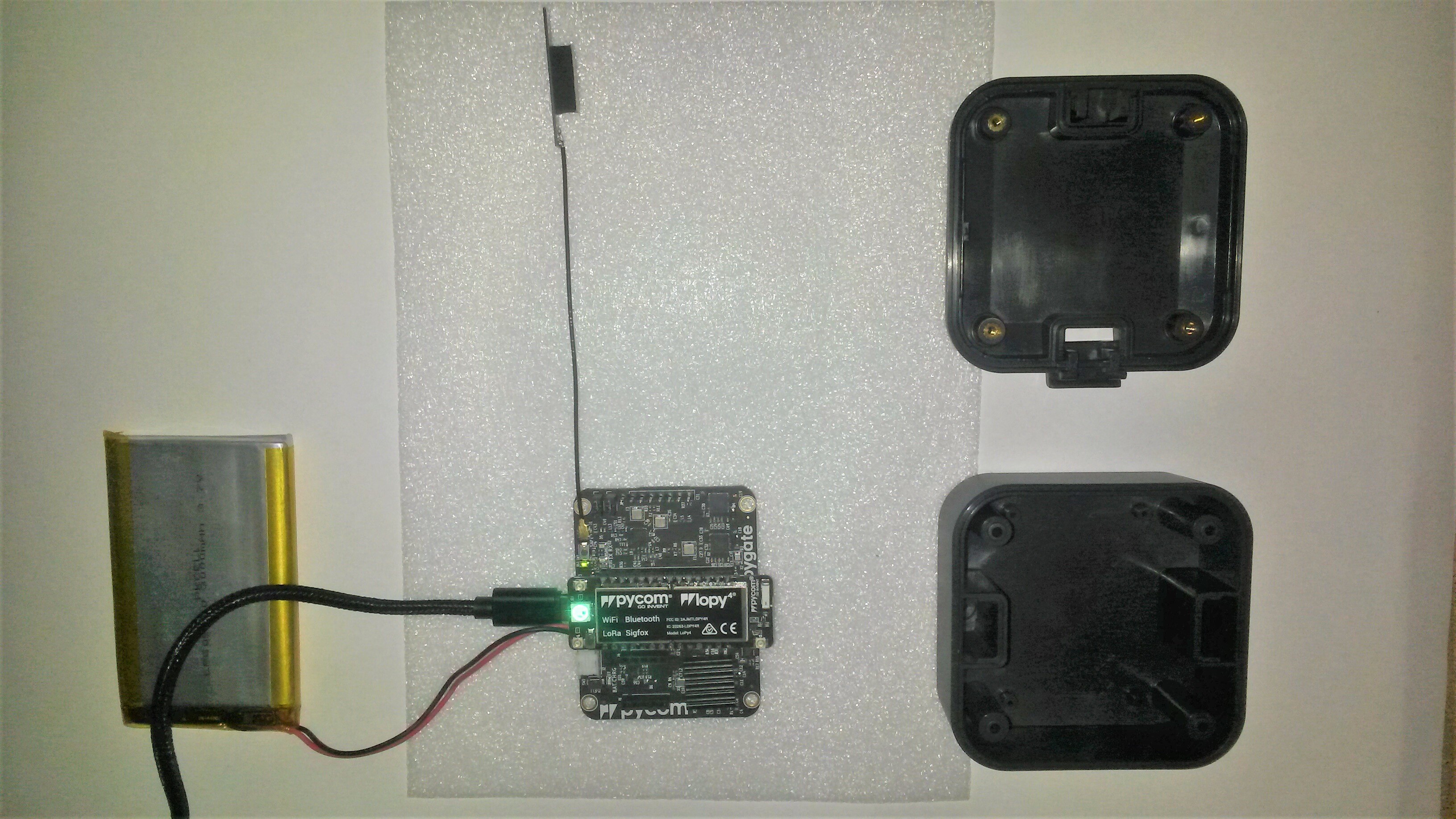
For a temporary pop-up gateway, it would be simple to include a very small LiPo, e.g. 150mAh, inside the enclosure and use an external USB battery bank with the small battery providing power during USB battery bank changeovers. Or just use a bigger and better enclosure.
I powered the Pycom pygate with WiFi backhaul from a fully-charged 3000mAh LiPo battery. It ran for just over 3 hours with a fairly low workload - about 850 uplinks and about 50 downlinks.
The bucket arithmetic is pretty simple:
3Ah runs it for 3 hours.
It draws about 1A at 3.7 V = about 3-4 Watts power consumption. As expected.
Amazon lists lots of USB power banks at low cost with capacity up to 26800mAh. Some with capacity displays and even small PV charging panels.
So, it should be possible to run a very portable pop-up type gateway for 12+ hours. It could obviously be paired with a mobile WiFi hotspot or mobile phone for backhaul.
Since I would put it on the apartment porch railing or corner post, I’d probably plug a USB wall wart into the outlet out there, assuming I could com up with a safe waterproof way to do so.
I see no mention of a GPS capability for the gateway board, so I assume I’d have to add a GPS receiver myself? Not that it would move - so not a biggie - the GPS built into my LoRaGo port does not see any satellites inside my appartment, so I fix the location from Google Maps coordinates.
Over 75% of the gateways used for the community network (my estimate) don’t have GPS. Its use is limited anyway so I wouldn’t bother.
Besides, the main reason to add a GPS to a gateway would be to provide more accurate timing and for that you need to feed PPS to the concentrator, I don’t see any connector for that purpose on PyGate.
Actually there is an GPS PPS input on a multifunction header on the board.
One thing I will say for Pycom is that they’ve put together a very nice writeup of how the SX130x actually works and is operated by a host as part of their data sheet, which is worth reading for all users of Semtech concentrators. Maybe I’m forgetting, but I don’t recall seeing it set out quite as clearly in any other source.
My curiosity though is this: has anyone managed to find the code that makes it operate as a gateway? I’m assuming that it is either micropython, or else some adaption of the Semtech C codebase doing the heavy lifting behind the scenes.
Data good on some aspects but ambiguos/unclear/conflicted on some basics. e.g.
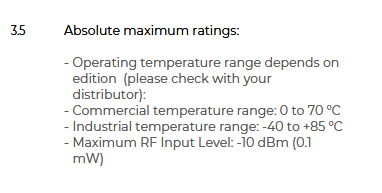
So both industrial and consumer temp range called out - so which is it? also if that is abs max, what is operating limit to stay safe under warranty? (I may have missed but couldn’t see called out in spec on quick read.)… I know will do as recommended and check what is/may ordered…
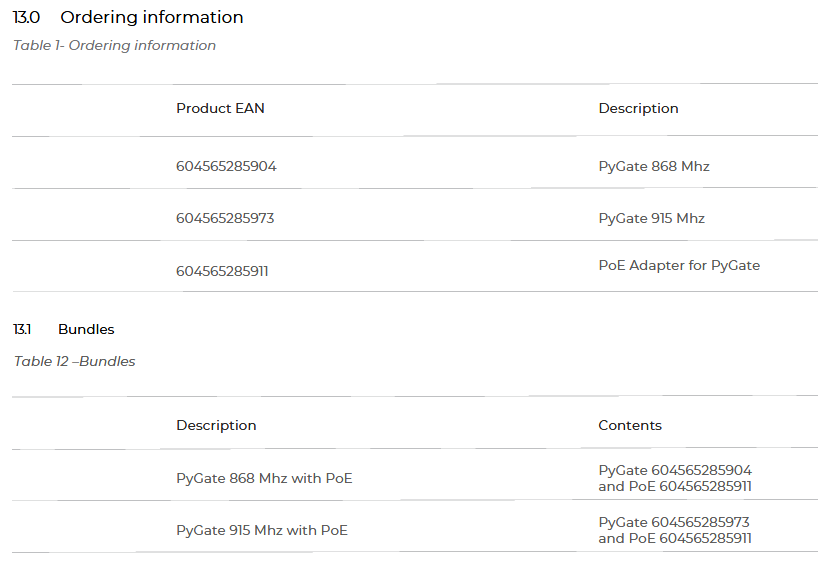
Ok can see variants by op freq and bundles with PoE adapter…but no temp variant
May be a clue in Regulator declaration?

Ah so its commercial then? 
Note the OEM Warning also highlighted…if yo integrate it with other products ina system your not allowed to tell people how to remove (e.g. exchange if changing territory or if a unit defective…not a hobbyist product…confirmed by…
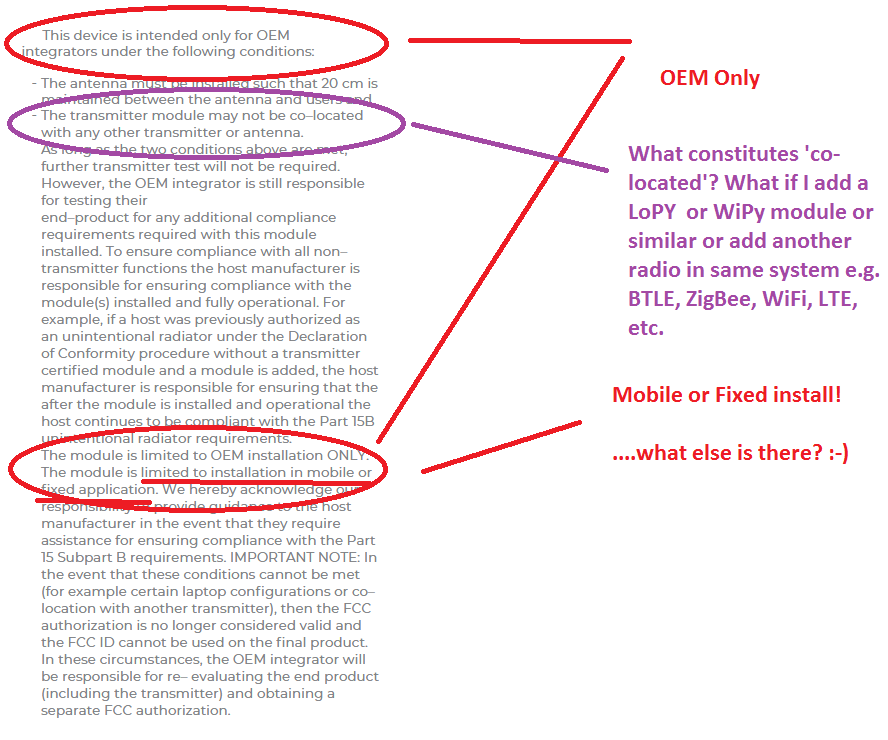
Just asking/highlighting…
Perhaps someone from Pycom can comment & clarify, is there a roadmap to wider temp versions?
Is it ok to add a WiPy module as indicated in the 1st diagram in the datasheet or does that open up a world of pain and additional costs?
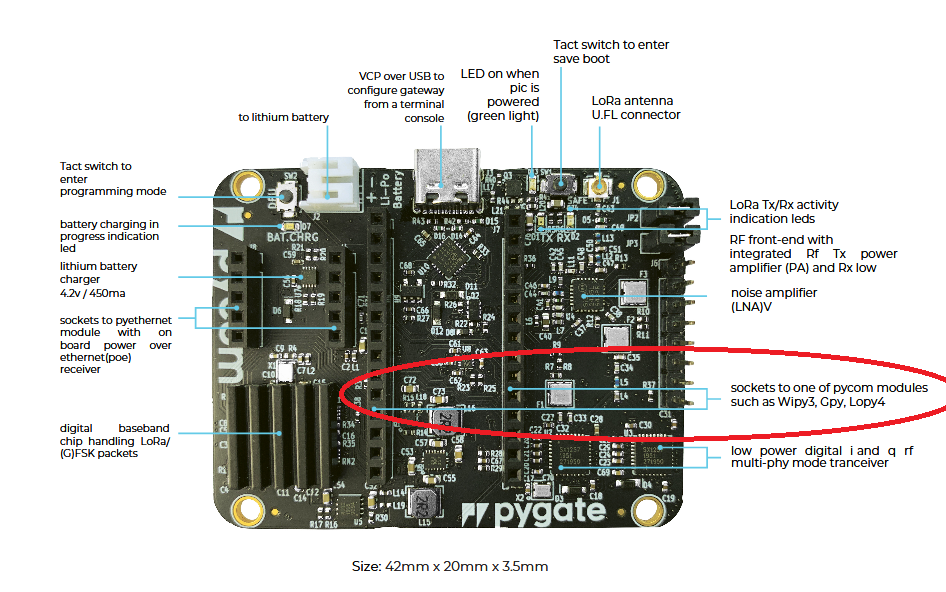
All very good points.
I hadn’t thought much about the low end of the temp ranges, which surprises me because in my professional life I often have - 0 deg C is insufficient around here. - 20 °C is close enough, -4 °F is extremely rare around here, especially recently.but single digits °F is seen up to a handful of days in a given winter. We used x86 architecture processors, which are never rated below 0 °C - so were dependent on those few fanless industrial/transportation computer vendors who bother to test and bin the Intel chipsets by low temperature tolerance for different applications. They can warrant some product variants for low temperature range uses using the “binned” chipsets.
Unless I can hope that the internal heating in an IP67 enclosure from an always-on PyGate and WiPy generate enough delta-T to keep it about 0 deg C - sounds likely. Since I think I see a heat sink on the baseband chip, it seems likely.
Alas it looks like the source for this is not yet open; presumably it may someday show up as part of their micropython fork but for the moment appears to only be available in binary builds from some internal branch: the source-form examples for using it have constants that don’t seem to appear anywhere else in their code repos.
So in terms of low-end gateways based on ESP chips, at present 0 of 2 are maintainable, both pygate and TTIG being closed source.
Not good!
Once this sort of electronics get inside a box because they go outside, the problem is usually one of keeping them cool, particularly if any sunlight falls on to the box. The electronics will keep itself toasty warm - these chipsets run hot anyway, so I’d anticipate you could very cold before you need to take action. I do high altitude balloon flights with a Pi in a polystyrene foam box at -45℃ outside and as I’ve gone overboard with the duct tape, +30℃ inside.
Temperature wise, it’s probably fine if things have been running.
But loose power for a few hours in winter, and you’re now starting up from a cold-soaked condition.
If it merely “doesn’t perform well” when cold, letting it warm up is enough.
In theory one could have a power resistor and run that for a while before trying to start the concentrator if a temperature sensor reads on the chilly side.
It’s often start-up from extreme cold that is the problem…but if system can limp into power up - even if out of spec/not fully functioning, & then get a reboot/warm start self heating will often have taken care of things…xtals and oscillators can be a problem. I’ve seen telecoms systems in cold climes set to do that automatically (after 30 mins IIRC when they have been off for >few hours) as a matter of course…